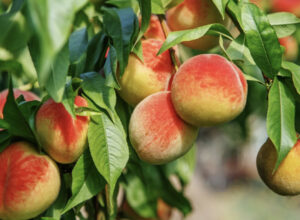A Home Gardener’s Guide: How to Take Care of Apple Trees

Apple trees are more than just a staple of orchards; they’re a delightful addition to home gardens. Many wonder, “how to take care of an apple tree?” Well, with their fragrant blossoms in spring and juicy fruits by fall, these trees bring both beauty and bounty. But to guarantee their health and a generous harvest, they need attention throughout the year. This guide dives deep into the best practices for apple tree care across all seasons.
Year-Round Apple Tree Maintenance
Trees, especially fruit-bearing ones like apple trees, significantly benefit from timely and appropriate pruning. Conducting this process after they’ve borne fruit in the fall season is ideal. This timing ensures that throughout the winter, the tree gets ample opportunity to heal from the pruning cuts. As a result, come spring, the tree is primed for robust and lively growth. However, proper pruning is an art; if you’re uncertain about the best techniques, it’s wise to seek guidance from professional arborists or turn to reputable online sources for guidance. A word of caution: improper pruning can lead to lasting damage, including fractured or entirely dead branches.
1. Spring: The Beginning of Growth
- Bud Break & Blossom Protection: As buds break and flowers bloom, ensure they are shielded from late frosts. You can use protective cloths or even old sheets to cover the trees during frost advisories.
- Pest Watch: Spring is also when many pests become active. Check for aphids, apple maggots, and codling moths. Use organic pesticides or introduce beneficial insects like ladybugs to manage them.
For any plant to truly thrive, its environment needs to be just right, and apple trees are no exception. One of the pivotal factors in their health and productivity is soil moisture. A consistent watering schedule, such as a weekly routine, ensures the ground retains the needed moisture to support the tree’s growth. However, like many things in life, balance is key. Gardeners should remain vigilant and adjust their watering based on the soil’s condition. If the ground feels too waterlogged, it’s a sign to pull back on the watering. Soil that remains too wet for extended periods can become a breeding ground for root diseases and may cause the roots to rot. Conversely, soil that’s too parched can stress the tree, leading to the shedding of leaves and a potential decrease in fruit production. In essence, understanding and maintaining the delicate balance of soil moisture is paramount for a flourishing apple tree.
2. Summer: The Season of Vigilance

- Consistent Watering: Apple trees require consistent moisture. Depending on rainfall, water them weekly, ensuring the soil is moist but not waterlogged.
- Mulching: Mulch around the base of the tree. This helps retain moisture, regulate soil temperature, and prevent weed growth.
- Disease Patrol: Summer is a critical time for diseases like apple scab and fire blight. Regularly inspect leaves and fruits. If you spot signs of disease, treat promptly with recommended fungicides or bactericides.
Summer brings with it the promise of sunlit days and bountiful growth, but for apple tree cultivators, it’s also a period of watchfulness. One of the top priorities is ensuring apple trees receive consistent watering. While they thrive on moisture, the frequency of watering hinges largely on the seasonal rainfall. It’s essential to strike a balance where the soil remains moist but stops short of becoming saturated. Mulching is another summer staple. By adding a protective layer of mulch around the tree’s base, you not only help conserve soil moisture but also maintain a stable soil temperature and thwart the intrusion of pesky weeds.
However, the warmth of summer can also invite unwelcome guests. Diseases like apple scab and fire blight find the season conducive. Hence, a proactive approach is vital. Regularly surveying the tree’s leaves and fruits for any early signs of disease can make all the difference. Should you encounter any troubling signs, swift intervention using the appropriate fungicides or bactericides is key to safeguarding your apple tree’s health.
3. Fall: Preparing for Dormancy
- Pruning: Post-harvest is the time to prune your apple tree. This helps it heal before the onset of winter and preps it for spring’s growth. Focus on removing dead or crossing branches. If you’re unsure, consider seeking advice from tree care specialists.
- Fertilization: Just before the first frost, apply a balanced fertilizer. This nourishes the tree, providing the nutrients it needs to brave the winter.
As the vibrant hues of fall unfold and the temperatures begin their gradual descent, it’s time to turn our attention to preparing our apple trees for the winter months ahead. Fertilization during this transitional season can play a pivotal role in ensuring the tree’s robustness against the chilly onslaught of winter. However, not all fertilizers are created equal. It’s crucial to select one that’s best suited for the specific variety of apple trees you’re nurturing.
If you find yourself uncertain or overwhelmed by the multitude of options available, reaching out to experts in the field or seasoned arborists can be invaluable. A well-composed fertilizer typically contains a harmonious mix of essential elements: nitrogen for leafy growth, phosphorus for root development, potassium for overall vigor, and trace micronutrients like iron, manganese, and zinc to cater to the tree’s diverse nutritional needs. Once armed with the right fertilizer, it’s important to adhere to the recommended application guidelines, with the optimal time being just before winter solidifies its grip with the season’s first frost.
4. Winter: Protection is Key
- Guard Against Frost: While mature trees can handle the cold, younger trees are vulnerable. Wrap their trunks with tree guards or burlap to prevent frost damage.
- Check Soil Moisture: Even in winter, it’s essential the soil doesn’t dry out completely. Water occasionally during prolonged dry spells.
The geographical climate of your orchard plays a pivotal role in the care required for apple trees, especially concerning frost protection. Particularly vulnerable to frost damage are the younger trees. With temperatures oscillating between freezing nights and warmer days, buds might prematurely swell, causing them to crack and perish. To defend against this, drape your trees with insulating blankets in anticipation of frost and mulch adequately to prevent snow from collecting around the tree base. Mismanagement of mulch could result in the tree succumbing to chilling temperatures.
Apple trees, if unmonitored, can fall victim to a myriad of pests and diseases that could inflict damage or even be fatal. Regular inspections, especially during the growth-intensive spring and summer seasons, are vital for early detection. Swiftly addressing any observed issues is imperative to halt their spread and preserve the tree’s health.
Conclusion
How to care for an apple tree is essential knowledge for garden enthusiasts. Caring for an apple tree is a year-long commitment. With the right practices, you’ll be rewarded with vibrant blossoms, luscious apples, and the joy of tending to nature. If you’re looking to add an apple tree to your property or need expert advice on care, don’t hesitate to reach out to local tree nurseries or landscaping experts. They can provide detailed guidance on how to care for apple trees throughout the year.




